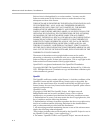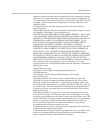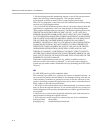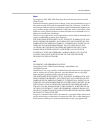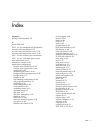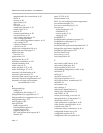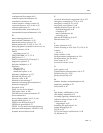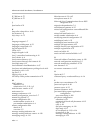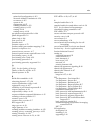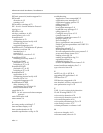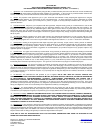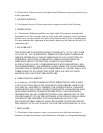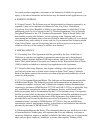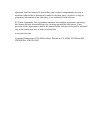
Administrator’s Guide SoundPoint IP / SoundStation IP
Index – 6
SIP basic protocols, header support B–4
SIP header
diversion A–12
warning A–13
SIP headers, warnings 4–72
SIP. See also Session Initiation Protocol
sip.cfg A–4
SIP<SIP> A–10
soft keys <softkey> A–103
sound effects <se> A–31
SoundPoint IP
applications 4–33
configuring phones locally 4–83
features, list of 1–6
supported languages 4–31
SoundPoint IP / SoundStation IP phones
features, overview 2–8
introduction 1–1
network 2–2
new features, overview 2–13
SoundPoint IP 330
switching text entry mode 3–7
SoundPoint IP 650
playback 4–37, A–92
recording 4–37, A–92
SoundPoint IP 670
playback 4–37, A–92
recording 4–37, A–92
SoundStation IP
applications 4–33
configuring phones locally 4–83
features, list of 1–6
supported languages 4–31
SoundStation IP 7000
daisy-chaining 4–38
provisioning over CLink 4–39
treble/bass controls
4–80
speed dial 4–13
SRTP. See also secure real-time transport
protocol
static DNS cache 4–68
status menu 5–4
T
text entry mode, switching 3–7
time and date display 4–14
time synchronization A–59
transmit equalization <txEq> A–50
troubleshooting
Application is not compatible 5–2
application error messages 5–3
application logging options 5–5
audio issues 5–15
blinking time 5–4
boot failure messages 5–8
bootROM error messages 5–2
calling issues 5–13
Config file error. Error is 5–3
controls issues 5–11
Could not contact boot server 5–2
displays issues 5–14
Error loading 5–3
Error, application is not present! 5–3
Failed to get boot parameters via DHCP 5–2
log files 5–5
manual log upload 5–7
Network link is down 5–3
Not all configuration files were present 5–3
power and startup issues 5–10
reading a boot log 5–8
reading an application log 5–9
registration status 5–4
scheduled logging 5–6
screens and systems access issues 5–12
trusted certificate authority list C–1
type-of-service bits 4–78
U
uaCSTA A–12, A–107, B–9
upgrading SIP application 3–19
USB device 4–37
USB devices, supported 4–38
user interface, soft key activated 4–13
user preferences <up> A–25
V
VAD. See also voice activity detection
VLAN ID using DHCP C–23
voice activity detection 4–74
voice activity detection <vad> A–52
voice mail integration 4–54
voice quality monitoring 4–79, A–52
voice setting <voice> A–37
volume persistence <volume> A–42
W
web server <httpd> A–63
welcome sound, reboot A–31



